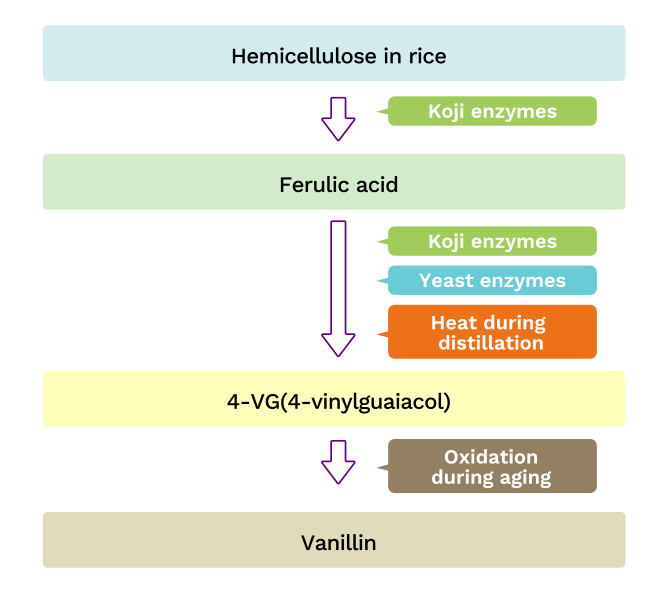The flavor profile of shochu builds upon various factors. Above all, the selected base ingredients, type of koji mold, and the koji base all shape the flavor profile of the final product. Another influential factor is the method of distillation used. Atmospheric distillation tends to bring out a fuller flavor of the raw material while vacuum distillation results in a lighter, slightly more floral profile. In addition, while most shochu is shipped without long-term aging, the duration of aging and the vessel used affects the flavor for the products.




















